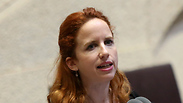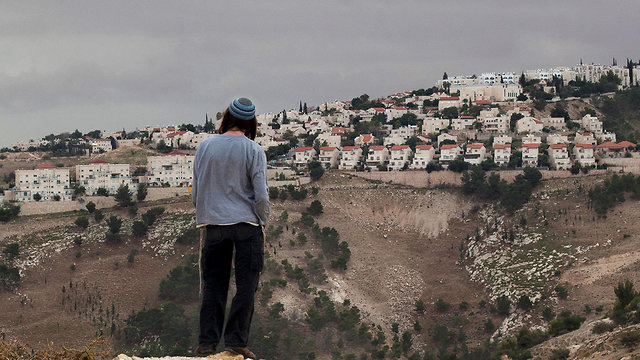
Stav Shaffir, chairwoman of The Knesset's Transparency Committee.
צילום: אלכס קולומויסקי
Knesset's report: settlements receive quarter of all regional councils funds
A report issued by the Knesset’s Research and Information Center shows that regional councils in the West Bank receive the highest government funding, in comparison to other regional councils across the country.
Regional councils in the West Bank receive the highest government funding in comparison to other regional councils across the country, according to a report issued by the Knesset’s Research and Information Center.
The report was ordered by the Knesset's Transparency Committee Chairwoman Knesset member Stav Shaffir (Zionist Union). It determines that regional councils in the West Bank receive a quarter of Israel’s state grants, even though they represent only 5 percent of the country’s regional councils.
“The Israeli Government doesn’t see its citizens, and lies to the residents of the periphery,” MK Shaffir said.
The report gathered data from several sources and reviewed the funding the regional councils had received between 2015-2016 in education, and welfare as well as support grants from Ministry of Interior.
However, the latest report did not include security budgets, as opposed to previous reports issued by the Knesset.
According to the findings, a student in the settlements receives NIS 15,900 per year, while the national average stands on NIS 9,800.
In addition, it was found that support grants to regional councils in the West Bank are larger the the ones other Israeli regional councils receive.
The report indicates that residents of the two ultra-Orthodox cities in the West Bank—Modiin Illit and Beitar Illit—received 6.6% of all support grants, despite the fact they represent only 2.7% of Israel’s population.
Furthermore, the residents of the West Bank regional councils are also funded in a disproportionate way to their number. They recieve NIS 99.8 million, making up 9.2% of all grants, even though they make up 6.7% of resinders in regional councils in Israel.
The biggest gap was evident in the budget to regional councils: NIS 144 million, which is a quarter of all budgets to regional councils in Israel, go to regional councils located in the West Bank, while these councils constitute only 5% of all the country's regional councils.
“This report is really not a surprise,” Shaffir told Ynet. “It only repeats the data we have been gathered in the past years, and it’s only becoming more and more evident.
“What we are seeing here,” shaffir continued, “is an official report from the Knesset’s Research Center, that looked into the budgets and concluded they exceed budgets to any other part of Israel—including the periphery communities.”
“This is only the tip of the iceberg, since the report doesn’t include the budgets that are transferred outside the budget plan, like the Settlement Division’s budgets that are mostly invested in the West Bank settlements and not in the State of Israel,” said Shaffir.
“This is the answer to Orna Peretz from Kiryat Shmona, who asked the prime minister where are the budgets for health facilities in the north.
“There are many sought-for-budgets to be found in this report, budgets that the north has been waiting for for a long time,” Shaffir concluded.












